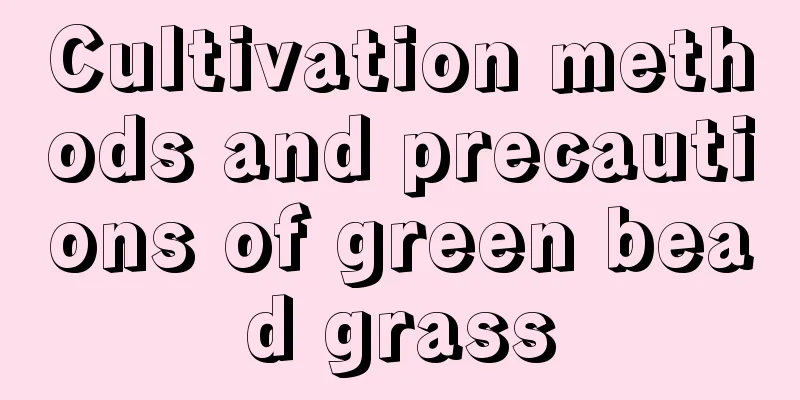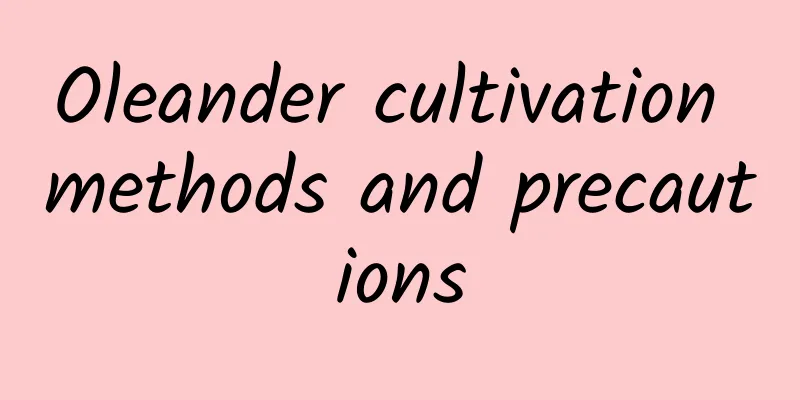Cultivation methods and precautions of green bead grass

1. Maintenance methods1. Light management: When green grass grows, it is different from other plants. Do not give the green bead grass enough sunlight, because it belongs to the Urticaceae family and is a plant that likes semi-shaded environment, so try to avoid direct sunlight when caring for it. 2. Water replenishment: Keep the soil moist all year round, moderately moist is fine. Because green pearl grass is a waterlogging-resistant plant with a well-developed root system, it can grow in swamp environments. 3. Nutrient management: Green pearl grass has a well-developed root system, so it has relatively high requirements for nutrients. It should be fertilized once a month, and nitrogen, phosphorus and potassium compound fertilizers can be used. 4. Temperature management: This plant is not winter-resistant and prefers a warmer environment. The temperature must be kept above ten degrees Celsius during the winter. 2. Breeding techniques1. Reproduction: Green pearl grass mainly reproduces asexually, and its stolons can grow rapidly in a suitable environment and spread throughout the area. Therefore, its reproductive ability is very strong, making it suitable for cultivation by modern young people and potted plant enthusiasts. 2. Repotting: Because of its well-developed root system, it is recommended to be potted in an environment with loose soil. When the space in the flowerpot becomes smaller, it should be repotted in time. 3. Problem diagnosis and treatment1. Yellowing leaves: Green grass mostly lives in a moist and semi-shaded environment, so the hot summer can easily cause the leaves to turn yellow. At this time, we should keep its growing environment moist and semi-shaded. 2. Death in winter: Because green grass is not winter-resistant, it is easy for the plant to die in the cold winter, so you must take anti-cold measures. IV. Other issues1. Is it poisonous? Green pearl grass is non-toxic, and its emerald green leaves are very ornamental and suitable for home cultivation. 2. Can it be planted in the ground: Due to its special habits, it can be planted in the ground or in potted plants. In addition, it can grow well with reasonable maintenance. |
<<: Cultivation methods and precautions of pineapple sage
>>: Marjoram cultivation methods and precautions
Recommend
Does osmanthus like water? Is it a water-loving plant?
Does osmanthus like water? Osmanthus likes water ...
What are the effects and functions of dragon bone flower and what are the taboos
1. The efficacy and function of dragon bone flowe...
How to care for roses in autumn
Maintenance methods Fertilization In autumn, rose...
The correct way to fertilize on rainy days
Fertilizing is a very hard job for most farmers. ...
How to grow Chinese magnolia
1. Soil The Chinese magnolia tree is not very dem...
How to grow dragon bamboo in water to make it more vigorous
Dragon bamboo is a plant of the Poaceae family. I...
What is Artemisia selengensis?
What is Artemisia selengensis? Artemisia selengen...
How many years does it take for cherries to bear fruit?
Introduction to Cherry Planting Cherries prefer a...
Can blue snowflakes be grown indoors?
1. Can be raised indoors Blue snow flower is a pl...
When is the right time to sow spring wheat?
Spring wheat planting time Spring wheat has a wid...
How to repot a bottle orchid
When should you choose the right time to repot th...
Wolfberry planting technology
1. Land planning, leveling and improvement Land p...
How to Rejuvenate Dragon Blood Tree
Reasons for the rejuvenation of dragon blood tree...
Where do asparagus seeds come from?
Where do asparagus seeds come from? Asparagus is ...
Is it good to water flowers with beer? You can't just water them directly. The key is to use the correct method
Is beer good for watering flowers? Beer is good f...









